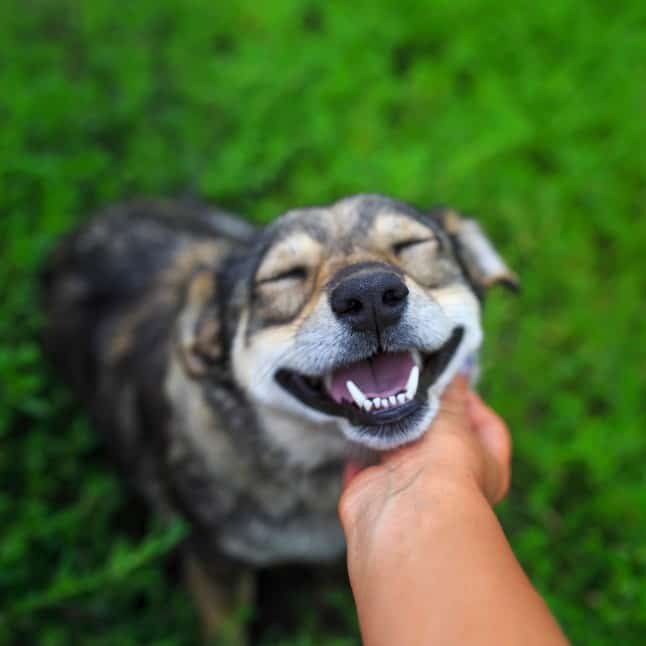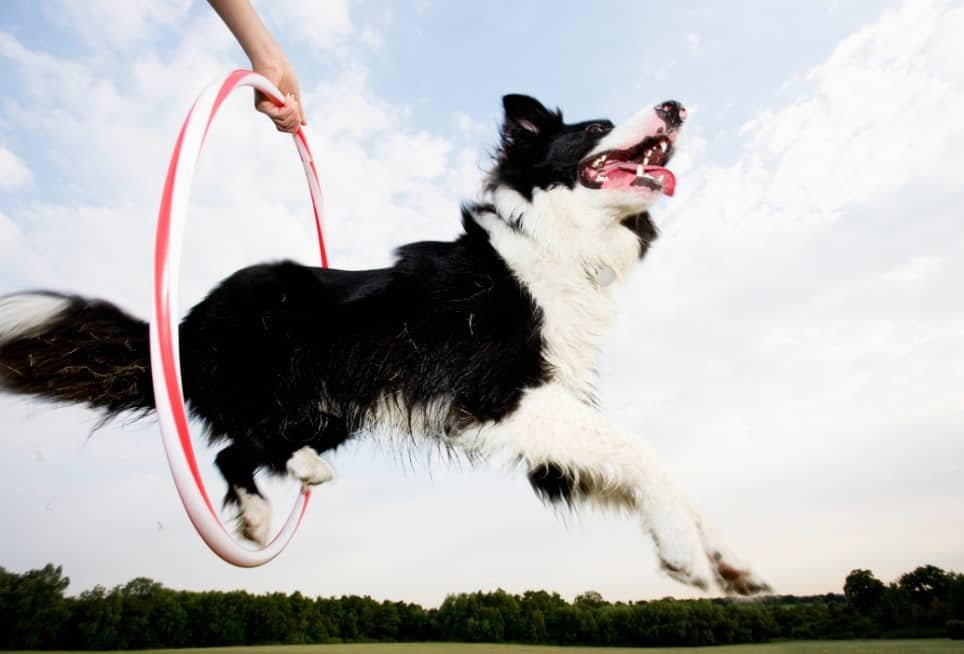Table of Contents
Dog training has become a worldwide phenomenon, with dogs being trained for a variety of purposes. The history of dog training goes back thousands of years, to a time when humans first began to domesticate wolves. There are two main theories on how the connection between humans and dogs formed: either humans stole wolf pups or wolves approached human camps for food. Initially, dogs were trained for tasks such as herding, guarding, pulling carts, and hunting. In the early days, dominance-based training methods were used, as canine psychology was not widely understood until the 1900s. However, Ivan Pavlov’s experiments in the late 19th century led to the development of classical conditioning in dog training, while B.F. Skinner’s experiments with operant conditioning furthered our understanding of how actions and consequences influence behavior. In the 20th century, Konrad Most published a book on training dogs, primarily using compulsion-based techniques. However, in the 1980s, positive reinforcement and purely positive training methods gained popularity. Today, other training methods include dominance-based training, behavior adjustment training, science-based training, and mirror training. At Highland Canine Training, we utilize a mixture of balanced and science-based approaches in dog training.

History of Dog Training
Early domestication of wolves
The history of dog training can be traced back thousands of years to the early domestication of wolves. Humans began to form a connection with these wild animals by either stealing wolf pups or through wolves approaching human camps in search of food. Over time, these wolves gradually evolved into the domesticated dogs we know today.
Theories on the connection between humans and dogs
There are two main theories regarding the formation of the connection between humans and dogs. The first theory suggests that humans actively stole wolf pups to raise them as their own, gradually domesticating them through generations of selective breeding. The second theory proposes that wolves were attracted to human camps by the scent of food scraps, ultimately leading to a mutually beneficial relationship between the two species.
Initial uses of dogs
Dogs served various purposes in early human societies. They were employed for tasks such as herding livestock, guarding homes and property, pulling carts and sleds, and assisting in hunting activities. Their instincts and unique abilities made them valuable assets for fulfilling a wide range of practical needs.
Evolution of Dog Training Methods
Dominance-based training
Early dog training methods were often dominance-based, reflecting the belief that establishing dominance over the dog was crucial for effective training. These techniques focused on asserting control, using tactics such as physical corrections and punishments to discourage unwanted behavior.
Canine psychology in the 1900s
It wasn’t until the 1900s that a deeper understanding of canine psychology began to emerge. Renowned behaviorists and psychologists delved into the study of dogs’ behaviors, motivations, and learning processes. This newfound knowledge had a profound impact on the evolution of dog training methods.
Classical conditioning and Pavlov’s experiments
In the late 19th century, Ivan Pavlov conducted groundbreaking experiments that laid the foundation for classical conditioning. By pairing a neutral stimulus, such as a bell, with a naturally occurring reflex response, like salivation in dogs, Pavlov discovered that he could elicit the response through the neutral stimulus alone. This discovery revolutionized the way trainers understood how animals learn and respond to stimuli.
Operant conditioning and Skinner’s experiments
Building upon Pavlov’s work, B.F. Skinner delved into operant conditioning, which focuses on the relationship between actions and rewards or consequences. Skinner’s experiments with animals, including dogs, revealed how behavior is influenced by reinforcement or punishment. This led to the development of positive reinforcement-based training methods, which became widely used in modern dog training.
Konrad Most and compulsion-based techniques
In the early 20th century, Konrad Most published a book on dog training titled “Training Dogs: A Manual.” Most primarily advocated for compulsion-based techniques, emphasizing the use of physical corrections and punishments to establish control over dogs. While these methods were widely practiced at the time, they have since been largely replaced by more positive and reward-based approaches.
Positive reinforcement and purely positive training methods
In the 1980s, positive reinforcement-based training methods gained popularity and prominence. These methods involved rewarding desired behaviors with treats, praise, and other positive stimuli, while ignoring or redirecting undesirable behaviors. Purely positive training techniques, which strictly avoid punishment or the use of aversive methods, also emerged and gained a significant following.

Different Approaches to Dog Training
Dominance-based training
Although dominance-based training methods were prevalent in the past, they have faced criticism in recent years. The emphasis on establishing dominance through physical corrections is deemed unnecessary and potentially harmful. However, some trainers still adhere to these methods, arguing that certain breeds or personalities require a more assertive approach.
Behavior adjustment training
Behavior adjustment training (BAT) is an approach that focuses on modifying a dog’s reaction to specific stimuli or triggers. It involves gradually exposing the dog to the triggering stimulus from a safe distance and rewarding calm behavior. This method aims to change the emotional response of the dog, helping them overcome fear, aggression, or other undesirable behaviors.
Science-based training
Science-based training relies on the principles of animal learning and behavior, utilizing positive reinforcement and rewarding desired behaviors. Trainers who follow this approach incorporate the latest research and findings in canine behavior, ensuring that their training methods are based on scientific evidence rather than traditional beliefs or anecdotal experiences.
Mirror training
Mirror training is a relatively new approach that focuses on building a strong connection and communication between the dog and the trainer. The method centers around the concept of “mirroring” the dog’s behavior and responding appropriately. By mirroring the dog’s actions, trainers can effectively communicate with and guide the dog, ultimately fostering a harmonious relationship.
Highland Canine Training
Highland Canine Training is a renowned dog training facility that utilizes a balanced and science-based approach to dog training. They recognize the importance of understanding each dog’s unique traits, motivations, and learning styles. By incorporating elements from various training methods, Highland Canine Training aims to achieve balanced and comprehensive training results.

Common Dog Training Practices Worldwide
Basic obedience training
Basic obedience training is a fundamental aspect of dog training, regardless of the specific training method employed. It involves teaching essential commands such as sit, stay, come, and heel. Obedience training not only ensures that dogs are well-behaved but also strengthens the bond between the dog and owner.
House training
House training, also known as potty training, is crucial for teaching dogs appropriate bathroom habits. This training involves establishing a routine, rewarding the dog for using the designated area, and consistently reinforcing desired behaviors. House training is essential for a harmonious living environment and a well-adjusted dog.
Socialization
Socialization is the process of exposing dogs to various people, animals, environments, and experiences to help them develop appropriate social skills and confidence. Early and ongoing socialization is vital for preventing behavioral issues and ensuring that dogs can navigate different situations comfortably.
Agility training
Agility training is a physically and mentally stimulating activity that involves navigating an obstacle course. It enhances a dog’s coordination, speed, and problem-solving abilities. Agility training is popular among dog owners and is often seen at competitive events, showcasing the bond between handlers and their dogs.
Working and service dogs
Training working and service dogs involves specialized instruction to perform tasks in various fields. From search and rescue dogs to therapy dogs, and police or military dogs, these canines undergo intensive training to excel in their respective roles. The training process for working and service dogs requires advanced obedience skills and task-specific training.
Training for Specific Purposes
Search and rescue dogs
Search and rescue dogs are trained to locate missing persons in various environments and situations. They learn to follow scent trails, signal the presence of a person, and navigate challenging terrains. These highly skilled dogs can save lives by aiding in locating individuals in emergency situations.
Therapy dogs
Therapy dogs provide comfort, companionship, and emotional support to individuals in hospitals, nursing homes, schools, and other settings. These dogs are trained to exhibit calm and friendly behavior while being comfortable in various social interactions. Their presence often brings joy and relieves stress for those they visit.
Police and military dogs
Police and military dogs undergo rigorous training to perform specific tasks such as tracking suspects, apprehending criminals, detecting explosives or narcotics, and providing protection to their handlers. Their training includes obedience, scent detection, and advanced tactics to assist law enforcement and military operations.
Hunting dogs
Hunting dogs are trained to assist hunters in tracking, flushing out, and retrieving game birds or other animals. They require specialized training to follow scent trails, respond to hand signals or whistles, and retrieve downed birds. Hunting dogs often possess a combination of natural instincts and a solid foundation in obedience training.
Herding dogs
Herding dogs have been traditionally used to assist in herding livestock, such as sheep or cattle. These dogs possess a strong instinct for gathering, controlling, and moving livestock with minimal guidance from their handlers. They require training to understand basic commands and to exhibit appropriate behavior around livestock.

Dog Training Equipment
Leashes and collars
Leashes and collars are essential tools for maintaining control and ensuring the safety of both dogs and their owners during training sessions or walks. Various types of leashes and collars are available, each serving specific purposes. Examples include standard leashes, retractable leashes, harnesses, choke collars, and martingale collars.
Clickers and whistles
Clickers and whistles are popular training aids used to communicate with dogs and mark desired behaviors. Clickers produce a distinct sound that can be consistently replicated, while whistles emit specific tones that dogs can learn to associate with particular commands or actions. These tools aid in precise communication and reinforcement during training.
Treats and rewards
Treats and rewards are powerful motivators in dog training. They are used to reinforce desired behaviors, encouraging dogs to repeat those actions. High-value treats or rewards that dogs find particularly appealing are often preferred, as they provide extra motivation and enthusiasm during training sessions.
Training pads and crates
Training pads and crates are used primarily in house training. Training pads provide a designated area for dogs to relieve themselves indoors, while crates serve as a safe and comfortable space for dogs to rest and retreat to. These tools aid in establishing routines, managing behavior, and promoting a sense of security for dogs.
Challenges in Dog Training
Training stubborn or aggressive dogs
Training stubborn or aggressive dogs can present unique challenges. It requires patience, consistency, and a thorough understanding of the underlying causes of their behavior. In these cases, seeking the help of professional trainers who specialize in behavioral modification may be necessary to address these challenges effectively.
Dealing with fear and anxiety
Fear and anxiety can significantly impact a dog’s ability to learn and respond to training. Training techniques that prioritize building trust, creating positive associations, and desensitizing the dog to triggers can help overcome these challenges. It is crucial to approach fearful and anxious dogs with compassion, patience, and a gentle training approach.
Addressing unwanted behaviors
Addressing unwanted behaviors, such as excessive barking, chewing, or jumping, requires consistent training and behavioral modification techniques. Identifying the root cause of these behaviors and redirecting the dog’s attention towards desirable alternatives is essential. Repeated redirection and reinforcement of desired behaviors can effectively address and modify unwanted behaviors.

Benefits of Dog Training
Enhanced communication and bond between dog and owner
Dog training strengthens the bond between dogs and their owners. Through training, dogs learn to understand and respond to commands, creating a clear line of communication. This enhanced communication fosters a stronger relationship based on trust, respect, and cooperation.
Improved obedience and responsiveness
Proper training instills discipline and improves a dog’s overall obedience and responsiveness. Dogs who have received consistent training are more likely to comply with commands, making them easier to manage in various situations. This improved obedience increases their safety and enhances their integration into society.
Safer and more well-behaved dogs
Well-trained dogs are safer for both the dog and their surroundings. They are less likely to engage in harmful or destructive behaviors and are generally more predictable and manageable. Training enables dogs to coexist harmoniously with other animals, people, and the environment.
Opportunity for mental stimulation and exercise
Training provides dogs with mental stimulation and exercise, helping to prevent boredom and behavior problems caused by lack of stimulation. Engaging in training activities challenges their minds, promotes problem-solving skills, and burns off excess energy. This leads to healthier and happier dogs.
Conclusion
Dog training is a universal practice that spans cultures and continents. Throughout history, humans have developed various methods to train dogs for specific purposes and to foster obedience and companionship. Advancements in understanding canine psychology and behavior have revolutionized training techniques, moving away from dominance-based methods towards positive reinforcement and science-based approaches. As the bond between humans and dogs continues to grow, dog training remains an integral part of ensuring the overall well-being and happiness of our canine companions.



